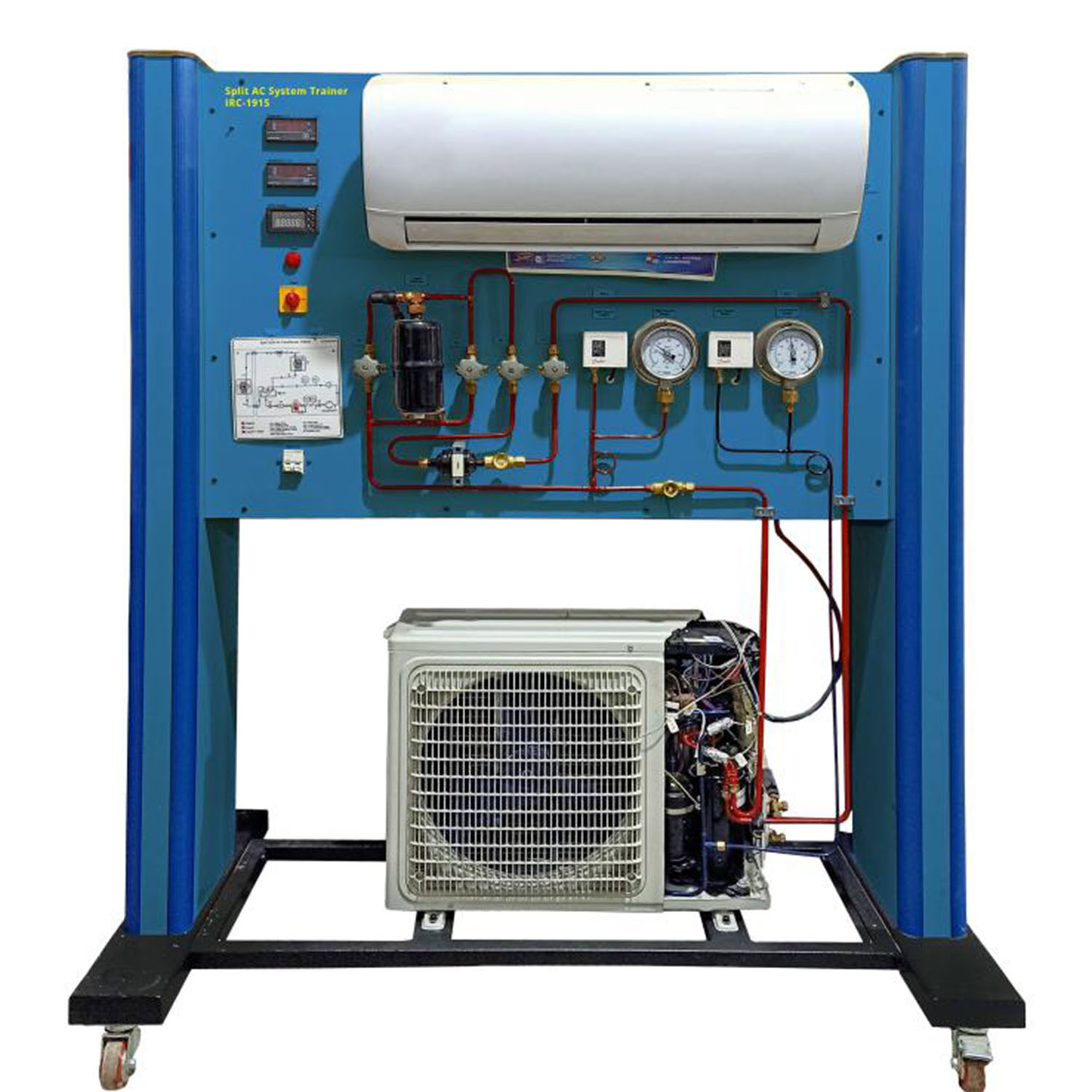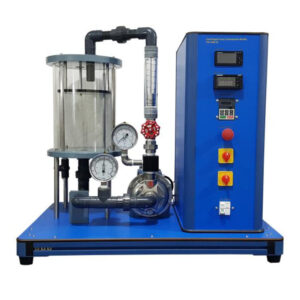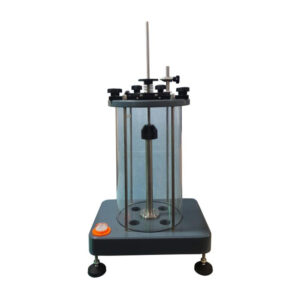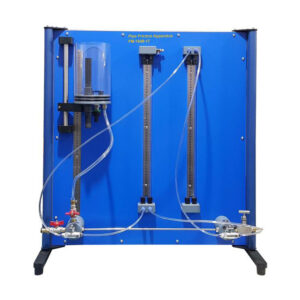Split AC systems are used to heat, cool, and dehumidify spaces. They are made up of an inner and an outer unit. A heat exchanger with a fan operating as an evaporator in the refrigeration circuit during cooling operation is located in the inner unit. It functions as a condenser when heating is being done. A compressor, another heat exchanger, an expansion element (like a capillary tube), and a switch that allows for the conversion of cooling to heating operation are all found in the outer unit. In a cooling operation, the inner unit’s heat exchanger’s evaporating refrigerant removes heat from the room air. By condensing the refrigerant in the outer unit, heat from the heat exchanger is released into the surrounding air. The direction of heat transfer is reversed during heating operation. This trainer has a dividing wall with a mounted modern split system air conditioner on its front and back panels. For the refrigerant, there are two more pressure displays available to further demonstrate how it operates. Remote control is used to choose the operating mode, fan stage of the inner unit (fan operation), and desired room temperature. The actual room temperature is recorded during automated operation, and a mode of operation is automatically chosen to maintain the desired room temperature. Additionally, the remote control is programmed to perform the following tasks: Timer with a single remaining running period in hours (sleep mode; suitable for energy-saving operation), a regular on/off switch, and the grill positioned horizontally at the air exit for air distribution (swing mode; fixed or movable).
Software IRC-1915SW (optional)
DAQ software specially designed in National Instrument™, LABVIEW™ environment to measure and calculate the results of apparatus. The software is optional and while using software a set of electronic sensors are included. Software can be run with any Windows™ environment.




